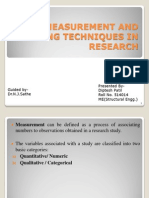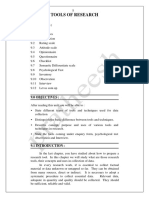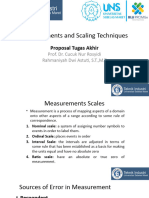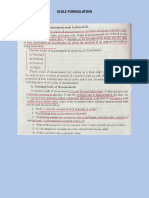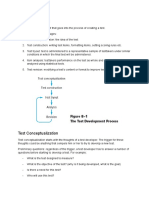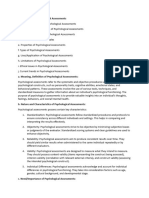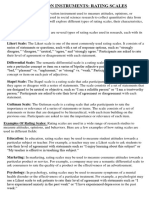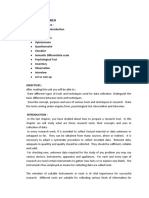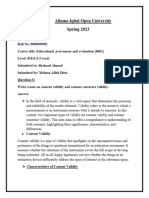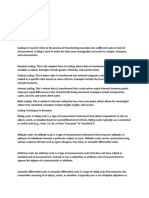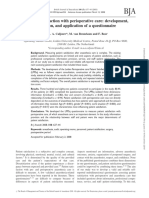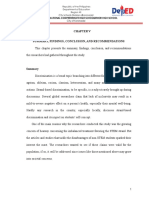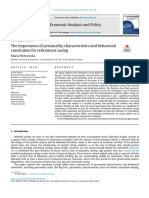Scale construction introduction Definition of scale use of scale in psychological assesment type of scale
–
likert thureston guttman semantic differential steps in scale construction aLL detailed construction of an attitude scale (likert) defination of aatitude STEPS ITEM WRITING ITEM ANALYSIS NORMS RELIABILITY VALIDITY
Introduction: Definition of Scale: A scale in psychological assessment refers to a set of items or questions designed to measure a particular construct or attribute, such as attitudes, beliefs, behaviors, or personality traits. Use of Scale in Psychological Assessment: Scales are commonly used in psychological assessment to quantify abstract constructs that are not directly observable. They provide a systematic way of measuring variables and collecting data, allowing researchers and practitioners to make inferences about individuals' characteristics or behaviors. Types of Scales: There are various types of scales used in psychological assessment. Some common types include: 1. Likert Scale: A Likert scale is a type of rating scale that measures the degree of agreement or disagreement with a statement. Respondents are typically asked to indicate their level of agreement or disagreement on a numerical scale (e.g., strongly agree, agree, neutral, disagree, strongly disagree). 2. Thurstone Scale: Thurstone scaling involves developing a set of statements that represent different levels of a particular attribute. Respondents are asked to indicate which statements they agree with, and these responses are used to calculate a score representing the individual's position on the attribute being measured.
3. Guttman Scale: Guttman scaling, also known as cumulative scaling, involves constructing a series of items that represent a continuum of attitudes or behaviors. Respondents are asked to indicate whether they agree or disagree with each item, and their responses are used to determine their position on the scale. 4. Semantic Differential Scale: A semantic differential scale measures the connotative meaning of objects, events, or concepts. Respondents are asked to rate a series of bipolar adjectives (e.g., good-bad, happy-sad) on a scale representing their perception of the concept being measured. Steps in Scale Construction: 1. Conceptualization: Clearly define the construct or attribute you want to measure and develop a theoretical framework for understanding it. 2. Item Generation: Generate a pool of items or questions that are relevant to the construct being measured. These items should cover a range of the construct's facets and be clear and unambiguous. 3. Item Selection: Select a subset of items from the pool generated in step 2 based on criteria such as item clarity, relevance, and representativeness of the construct. 4. Pilot Testing: Administer the selected items to a small sample of participants to evaluate their clarity, comprehensibility, and appropriateness. Make any necessary revisions based on feedback from pilot testing. 5. Scale Administration: Administer the finalized scale to a larger sample of participants to collect data for analysis.
6. Item Analysis: Analyze the responses to each item to assess their psychometric properties, such as item difficulty, discrimination, and internal consistency. 7. Scale Revision: Revise the scale as needed based on the results of item analysis and feedback from scale administration. 8. Norming: Establish norms or reference points for interpreting scores on the scale, such as percentile ranks or standard scores. 9. Reliability Assessment: Evaluate the reliability of the scale by assessing its internal consistency (e.g., Cronbach's alpha) and test-retest reliability. 10. Validity Assessment: Evaluate the validity of the scale by examining its content validity, criterion-related validity, and construct validity. Now, let's focus on constructing an attitude scale using the Likert method. Construction of an Attitude Scale (Likert): Definition of Attitude: An attitude is a psychological tendency that is expressed by evaluating a particular entity with some degree of favor or disfavor. Attitudes can influence behavior, cognition, and emotions. Steps: 1. Item Writing: Generate a pool of statements that reflect different aspects of the attitude you want to measure. Ensure that the statements are clear, concise, and cover various dimensions of the attitude.


